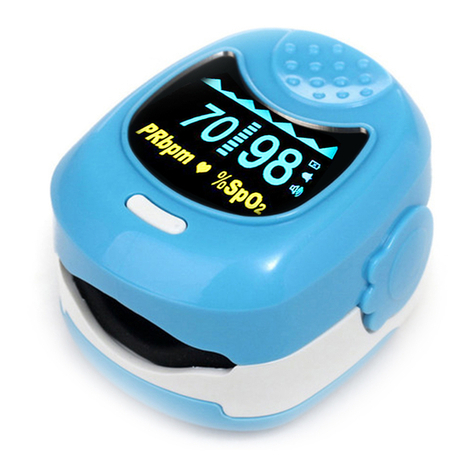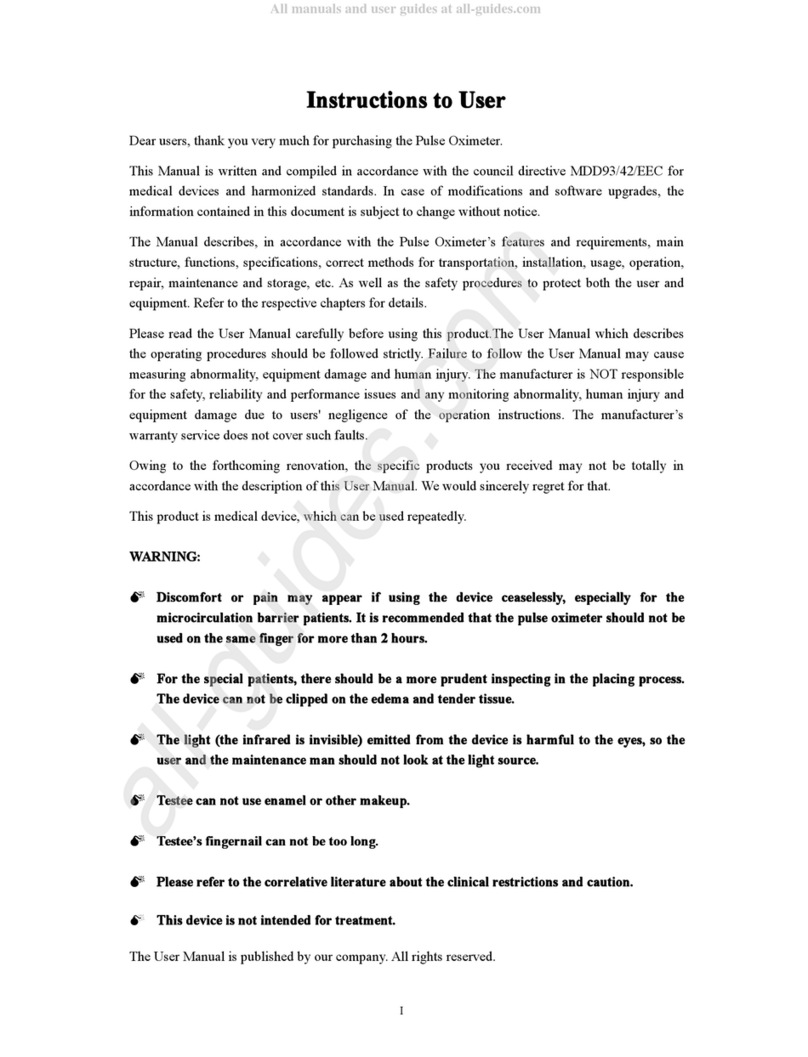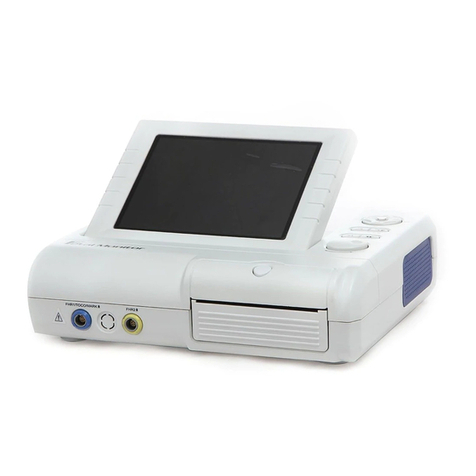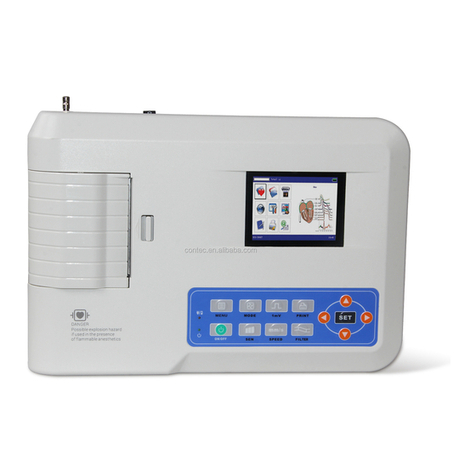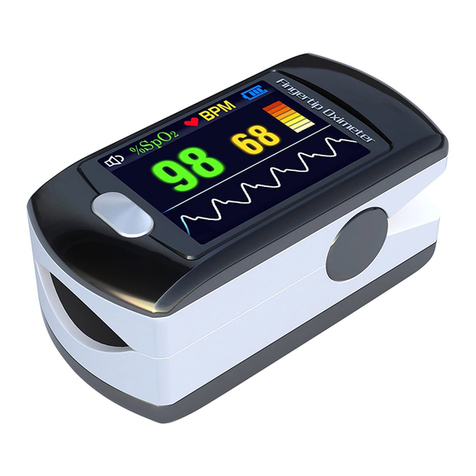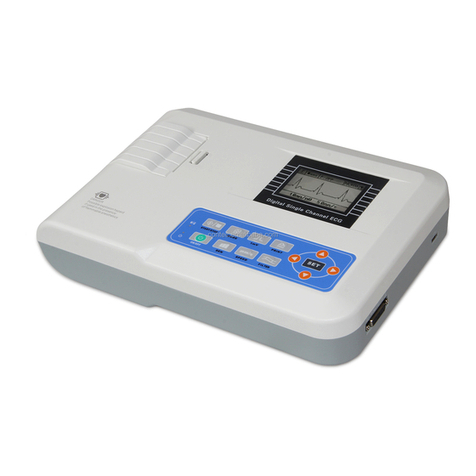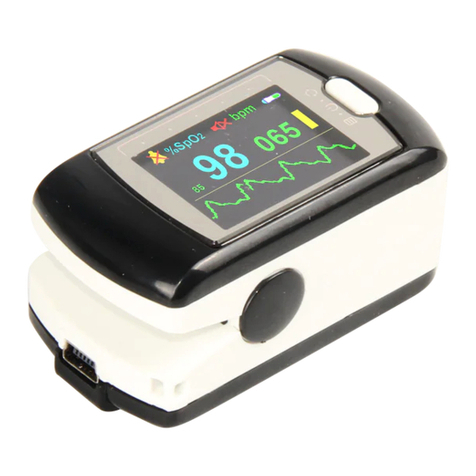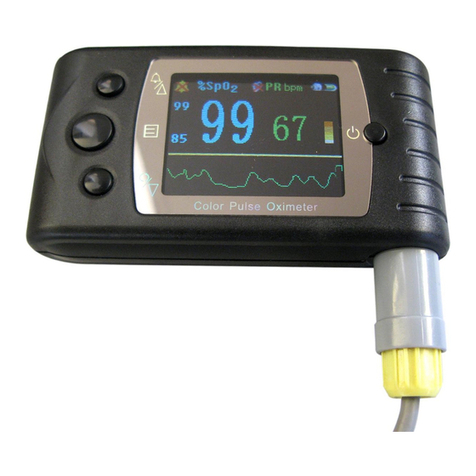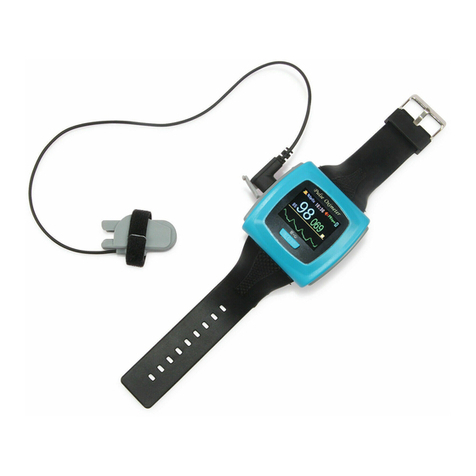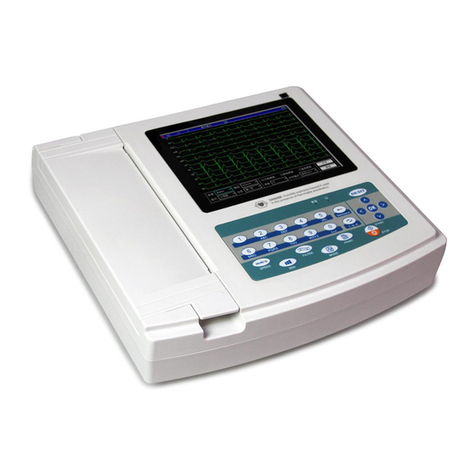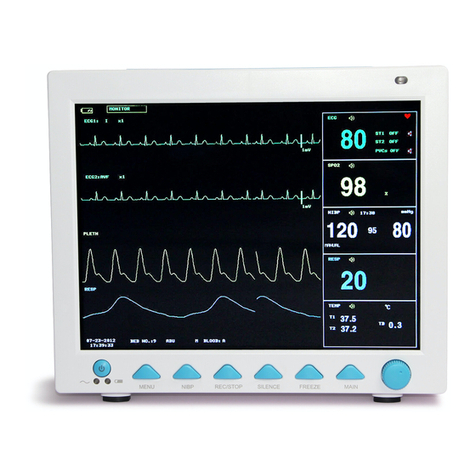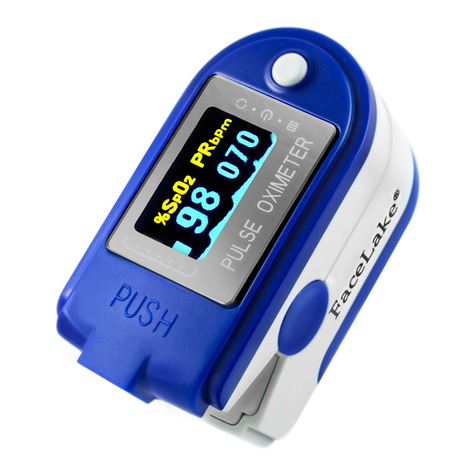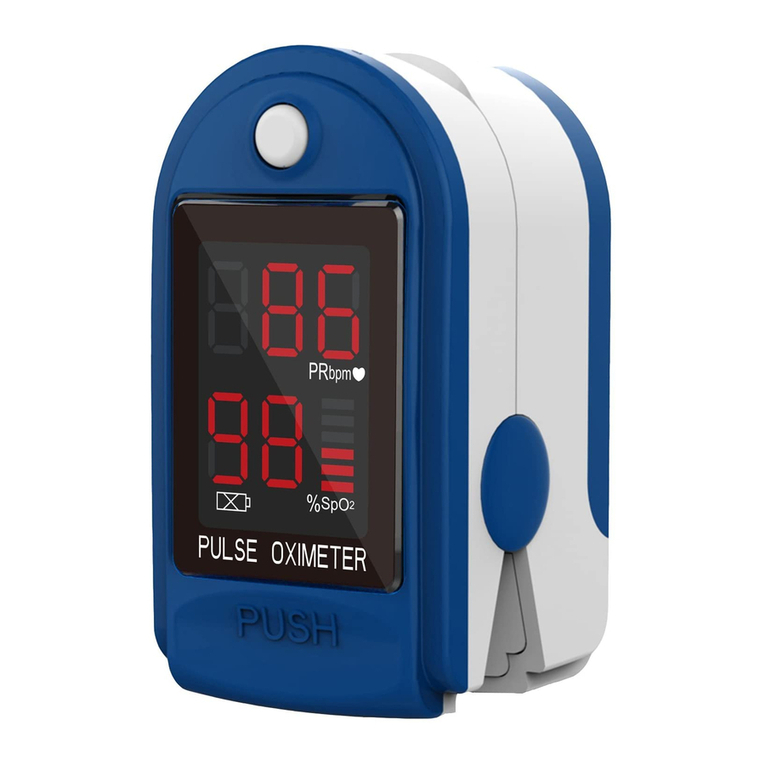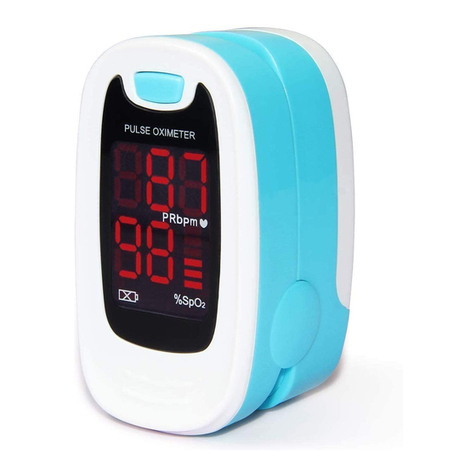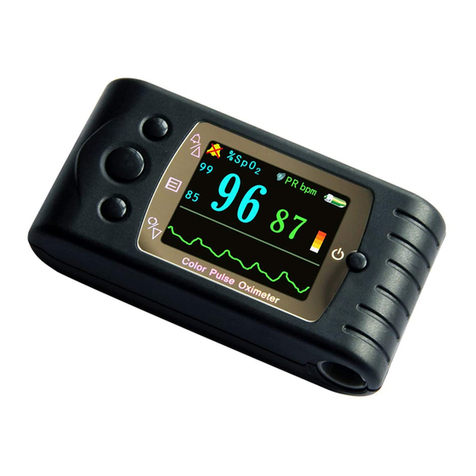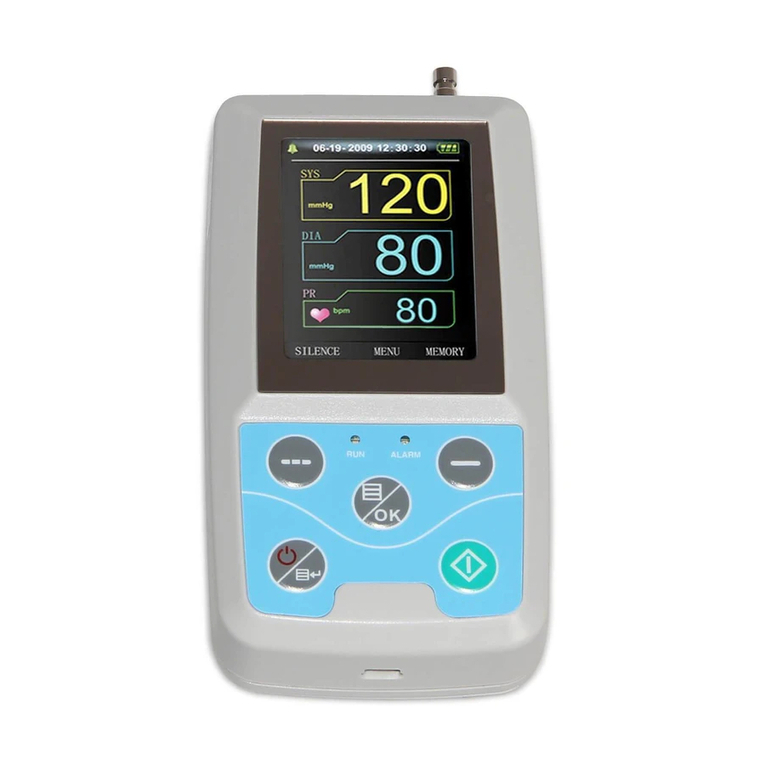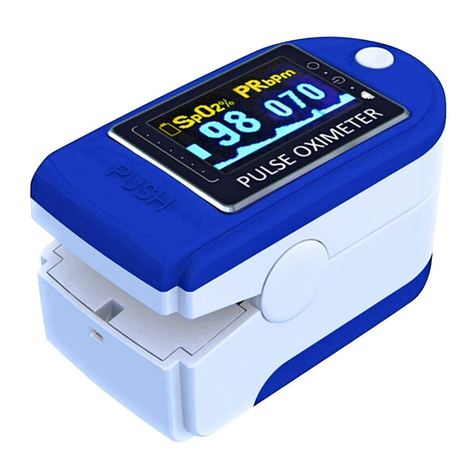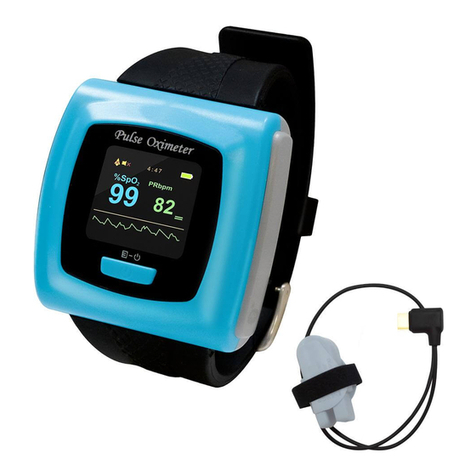enought into the probe.
Whether the device is used to adult or infant,it depends on the probe selected.
The update period of data is less than 5 seconds, which is changeable according to different
individual pulse rate.
Please read the measured value when the waveform on screen is equably and steady-going,
This measured value is optimal value. And the waveform at the monment is the standard one.
If some abnormal conditions appear on the screen during test process, pull out the finger and
reinsert to restore normal use.
The device has normal useful life for three years since the first electrified use.
This device has the function of alarming, users can check on this function according to chapter
6.1 as a reference.
The device has the function of limits alarming, when the measured data is beyond the highest
or lowest limit, the device would start alarming automatically on the premise of the alarming function
is on.
The device has the function of alarming, this function can either be paused, or closed for good,
please check the chapter 6.1 as a reference.
The device may not work for
all
patients. If you are unable to achieve stable readings,
discontinue use.
2
2
2
2
O
O
O
O
verview
verview
verview
verview
The pulse oxygen saturation is the percentage of Hb O
2
in the total Hb in the blood, so-called the O
2
concentration in the blood. It is an important bio-parameter for the respiration.
A
number of diseases
relating to respiratory system may cause the decrease of SpO
2
in the blood, furthermore, some other
causes such as the malfunction of human body's self-adjustment, damages during surgery, and the
injuries caused by some medical checkup would also lead to the difficulty of oxygen supply in
human body, and the corresp onding symptoms would appear as a consequence, such as vertigo,
impotence, vomit etc. Serious symptoms might bring danger to human's life. Therefore, prompt
information of patients' SpO
2
is of great help for the doctor to discover the potential danger, and is of
great importance in the clinical medical field.
The Pulse Oximeter features in small volume, low power consumption, convenient operation and
being portable.It is only necessary for patients to put one of his fingers into a probe for diagnosis, and
a display screen will directly show the measured value of pulse oxygen s aturation with the high
veracity and repetition.
2
2
2
2
.1
.1
.1
.1
Features
Features
Features
Features
A.
A.
A.
A.
Operation of the product is simple and convenient.
B.
B.
B.
B.
The product is small in volume, light in weight and convenient in carrying.
C.
C.
C.
C.
L ow power consumption
2
2
2
2
.2
.2
.2
.2
Major
Major
Major
Major
applications
applications
applications
applications
and
and
and
and
scope
scope
scope
scope
of
of
of
of
application
application
application
application
The Pulse Oximeter can be used in measur ing t he pulse oxygen s aturation and pulse rat
e
through
finger. The product is suitable for being used in family, hospital, o xygen b ar, community healthcare,
physical care in sports (It can be used before or after doing sports, and it is not recommended to use
the device during the process of having sport ) and etc.
